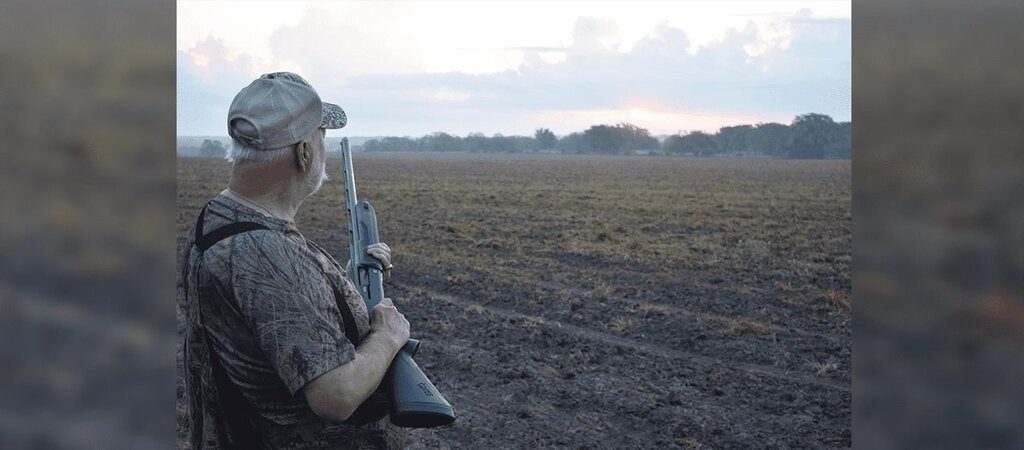
Opening day begins Saturday
By Ralph Winingham Generation upon generation of dove hunters in the Lone Star state have learned that the only constant year after year is that those grey ghosts of fall are completely unpredictable. Last year, Texas Parks and Wildlife Department biologists and hunting outfitters alike were optimistic about the prospects of a potential shooting bonanza with the approach of the September 2017 opening dates. Many areas of the state were blessed with bird-attracting food plots like natural and man-made fields of seed crops; in addition to multiple locations offering water sources where thirsty doves could settle in for a refreshing drink.
Hurricane Harvey’s aftermath
Biologists, outfitters optimistic
Stepping up to crystal ball for the upcoming dove season, biologists and outfitters are once again anticipating a target rich environment for dove hunters in many areas of the state. “The carry over of birds seems to have been pretty good,” said Owen Fitzsimmons, program leader for Webless Migratory Game Birds with TPWD. “I received reports from the Christmas bird count that there were a lot of birds that typically were not there at that time of year,” he said. “What is most important is that this year the hunters will have more opportunity to move around the state and chase the birds,” Fitzsimmons said.
Special white-winged dove area for South Zone
For the first time in dove hunting history, the expanded Special White-Winged Dove Zone weekend will kick off Sept. 1-2, which coincides with the established Sept. 1 opening day of the North and Central Zone seasons. The second weekend of the special season will fall on Sept. 8-9. That means the entire state will be open for dove hunting on Sept. 1, offering an estimated 250,000 hunters who bag about 30 percent of the doves shot in the country each year a prime time wingshooting opportunity. For the number crunchers, that annual Texas bird bag is about five million mourning doves and about 1.4 million white-winged doves. Hunters should note that hunting hours of the Special White-Winged Dove Zone occur noon to sunset each day. Hunters may take no more than two mourning doves and two white-fronted doves in their daily bag. “That is a really good thing for hunters and we are anticipating it will mean a lot more people in the field,” Fitzsimmons said. Also for the first time in history, opening day of the South Zone happens Sept. 14—the result of more than 10 years of collecting data and negotiating with federal officials. “The expansion of early white-winged dove hunting during the first two weekends in September, in effect, creates early September hunting opportunities statewide for the first time ever,” said Dave Morrison, deputy director for TPWD’s Wildlife Division. bird decoys Motorized dove decoys being watched by Wade Winingham.
Dove hunting brisk during first two weeks
TPWD officials estimate that about 80 percent of dove hunting activity occurs during the first two weeks of the September season. Typically, those birds bagged at that time are younger doves that have never experienced any hunting pressure. Morrison said incremental steps were required to obtain approval from federal officials for moving the South Zone season up to the 14th, noting the South Zone opening day has been on a Friday no earlier than Sept. 17 for quite some time. In some years, that resulted in the South Zone opening as late as Sept. 23. Officials based the later opening date in the South Zone on nesting studies, some dating back to the 1970s, with TPWD officials arguing that habitat and bird numbers have drastically changed since that time. “This is not something that came easily,” he said. “We had to get them to look at the biology and look at what was going on here and in other states. Texas is a big player (in the dove hunting industry), but we are not unique. The plan is for the 14th to be a fixed date and the change will be enacted from Texas to Florida.”
Earlier South Zone start means better opportunity
Smith said the setting of the 14th as the standard opening day for the South Zone has wide spread support from the hunting community. “Now, just like with the Sept. 1 opening day for the North and Central Zones, everyone can plan with a degree of certainty in addition to providing more hunting opportunity for our hunters.” As a final note, TPWD officials ask any hunter shooting a banded dove to call (800) 327-2263 to relay the band information to state biologists. The information collected from banded birds, in addition to Harvest Information Program data and other surveys, provide invaluable data in helping manage the popular outdoor resource. Read the complete article and other stories in the September/October Journal, on newsstands now.


